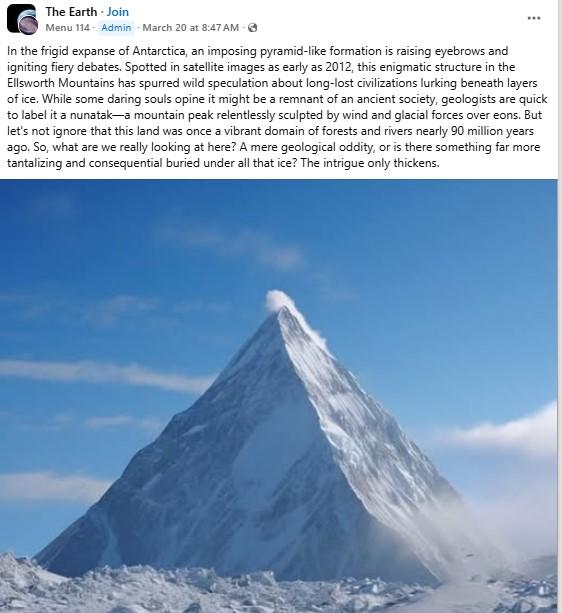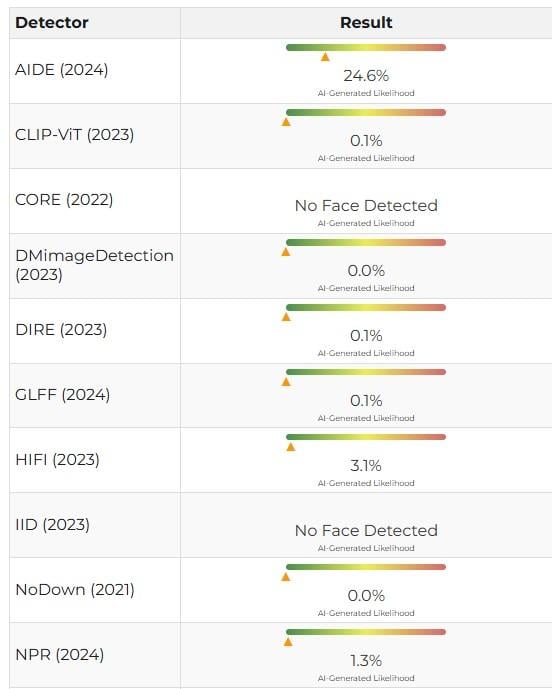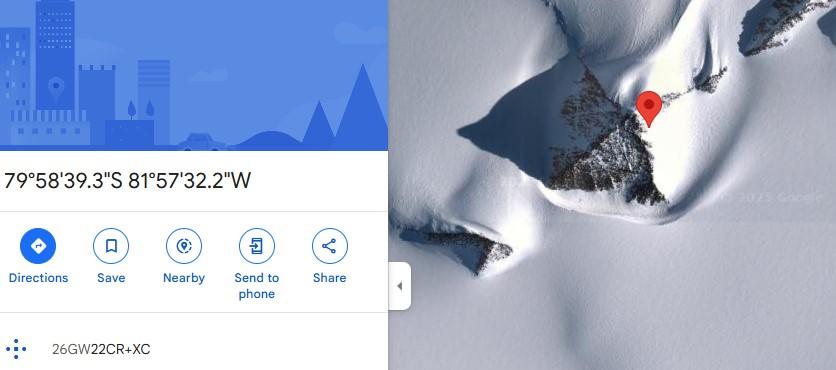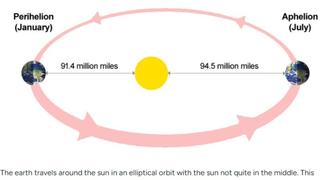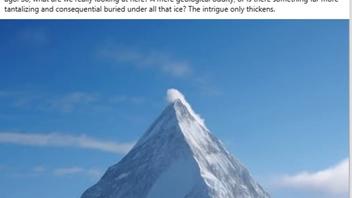
Is the pyramidal peak in Antarctica's Ellsworth Mountains the topic of an expert debate over whether it is a masonry pyramid constructed during Antarctica's last warm period, millions of years ago? No, that's not true: There is no credentialled scholar or explorer with on-the-ground knowledge making that case. The nameless mountain in Antarctica's Ellsworth Range sits in a well-studied range of mountains explored for decades by scientists and adventurers. Four-sided pyramidal mountains are not unusual in the mountains of the world.
The idea of masonry origins emerged after satellite images showed the peak and was resurrected in a March 20, 2025 Facebook post (archived here) under the title "In the frigid expanse of Antarctica, an imposing pyramid-like formation is raising eyebrows and igniting fiery debates." The post continues:
Spotted in satellite images as early as 2012, this enigmatic structure in the Ellsworth Mountains has spurred wild speculation about long-lost civilizations lurking beneath layers of ice. While some daring souls opine it might be a remnant of an ancient society, geologists are quick to label it a nunatak--a mountain peak relentlessly sculpted by wind and glacial forces over eons. But let's not ignore that this land was once a vibrant domain of forests and rivers nearly 90 million years ago. So, what are we really looking at here? A mere geological oddity, or is there something far more tantalizing and consequential buried under all that ice? The intrigue only thickens.
This is what the post looked like on Facebook at the time of writing:
(Source: Facebook screenshot taken on Mon Apr 7 21:43:37 2025 UTC)
A search of Google News' index of thousands of sites turned up no instances of explorers, scholars or geologists debating the origin of the peak at 79°58'39.25"S 81°57'32.21"W. Instead, the search using those coordinates and the word pyramid (archived here) turned up pseudoscience website posts and debunks of those posts.
The unnamed mountain is in the southern part of the Ellsworth Mountains in an area called Heritage Range. The Ellsworth Mountains are well-studied. Discovered by polar aviator Lincoln Ellsworth in 1935, the mountains have been surveyed in detail by a variety of teams from the University of Minnesota and other academic centers. Their findings include this survey published in 2007 by the US Geological Survey, (archived here) which notes 50 years' scholarship on the Ellsworth range.
Hundreds, if not thousands, of adventurers and mountaineers have also traversed the Ellsworth range, served by Union Glacier Camp in the Ellsworth range. Union Glacier Camp is about 60 miles from the pyramidal mountain.
The image used to illustrate the conspiratorial post suggesting a human role in the peak's shape is likely authentic. The ai-detection system at University of Buffalo's DeepFake-O-Meter found no strong evidence the photo is a creation of generative ai.
(Source: DeepFake-O-Meter screenshot taken by Lead Stories)
The peak is clearly seen on Google Maps' satellite images of the region:
(Source: Google Maps screenshot taken by Lead Stories)
There's nothing unique about the peak's pyramidal shape. Other famous four-sided pyramid peaks include The Matterhorn, on the border between Italy and Switzerland; Kailash in the Chinese Himalaya; and Makalu, on the China-Tibet border.
Read more debunks of flat earther and Antarctic "wall" claims here.

